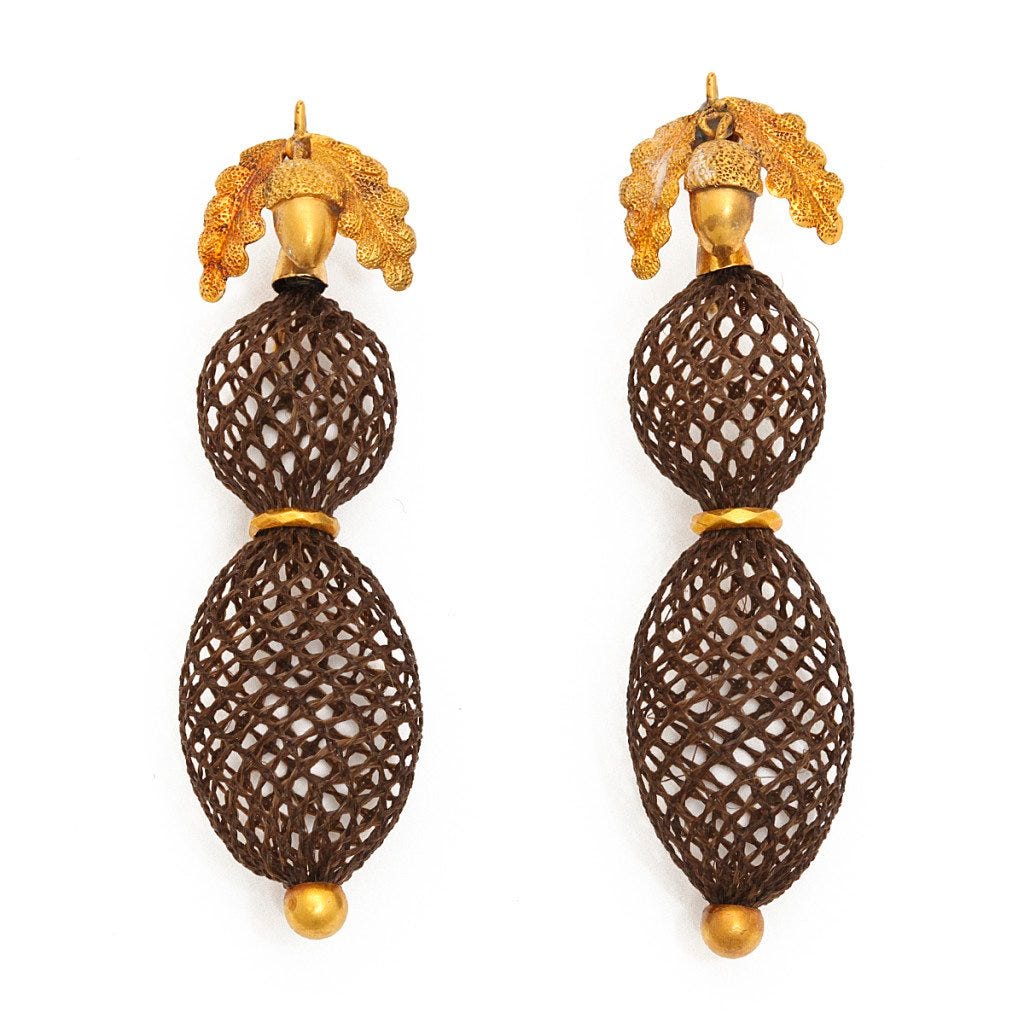Jewelry Club Weekly is for jewelry makers, jewelry wearers, and those who explore the meaning of jewelry.
Jewelry is worn on the body, exchanged as a symbol of commitment, and seen by others as a signifier of taste, status, and affiliation. The language of jewelry is so much a part of human civilization that most of us don’t realize our fluency. The message is communicated effortlessly and feels intuitive.
Of course, jewelry design is influenced by the times in which it is made, so I’m curious how jewelry from the past compares to the way we see things today. The expression of jewelry—its forms, size, weight, and materials—is constrained by the fact that it is intended to be worn or carried. However, within those constraints, there are many options. If jewelry is a core cultural expression, then how do the forms and materials translate over time?
By reviewing antiquities, we can see how jewelry design evolves with the needs of the wearer and, more importantly, how certain attributes remain consistent. Let’s look at some jewelry to see how pieces that have survived through time relate to what we wear now.
In addition to museum collections, antique fairs are reliable research resources. Today, we are using the upcoming Winter Show to find dealers of historic jewelry. The Winter Show, held annually at the Park Avenue Armory in New York City, opens on January 24. Over 70 exhibitors present objects and art spanning 5,000 years. Even though it would be great fun to attend the Winter Show in person, many dealers have comprehensive websites with articles offering an additional level of appreciation through detailed histories, provenance, and multiple views of the objects we wouldn’t have during an in-person visit. Be sure to appease your curiosity by following the links.
Here are some of the jewelry items I found interesting in light of today's design considerations.
Unusual materials
Jewelry often features rare, expensive, or culturally valuable materials,
so it's informative to observe the changes in how we regard these qualities.
Aluminum
Aluminum was once considered more precious than silver. Napoleon honored his most important guests by setting the table with aluminum flatware, while those with less status were demoted to using silver.
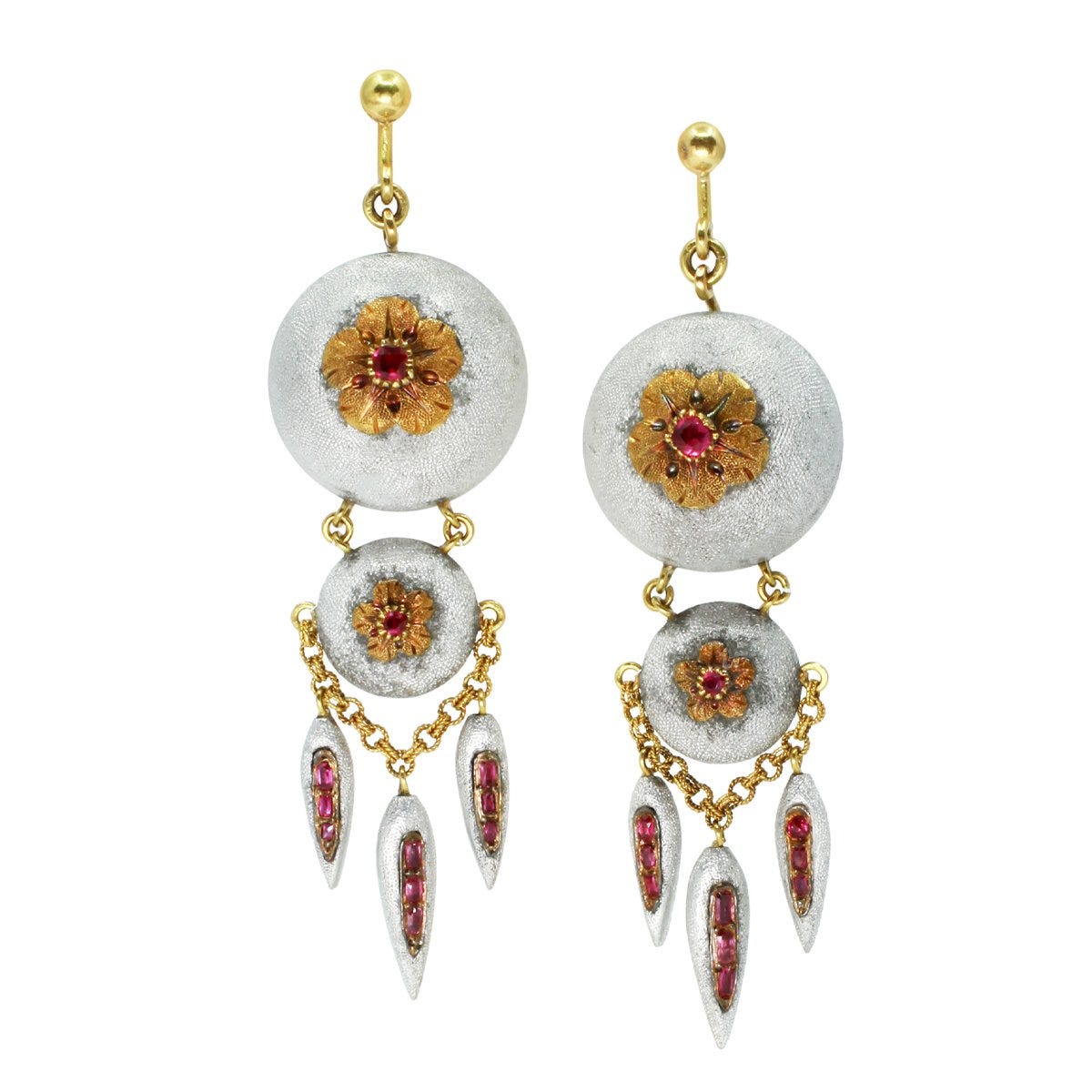
On the A La Vieille Russie website, you can read more about aluminum's evolving prestige, from a highly prized, newly discovered metal in 1825 to its current status as a ubiquitous drinks container.
Hair
Hair is a material that embodies many of the reasons why we wear jewelry. Hair jewelry was worn as a keepsake, a token of affection, and to commemorate an important event. It was a way to stay connected with someone who was far away or had died.
Though regarded as creepy today, previous generations used hair to make all forms of treasured jewelry. Hair jewelry was popular from the 1600s until the early 1900s, with a boom during Victorian times. That so much of it exists today speaks to the durability of hair as a substance and to its lack of intrinsic value. It cannot be melted down and sold when times are tough.
What I enjoy about this pair of earrings, also offered by A La Vieille Russie, is the contemporary appearance of the design. The pendant earring’s popularity persists, and the open forms accented by 18K yellow gold details are a compelling combination of contrasting color, weight, and texture.
You can learn more about Victorian hair jewelry on the ALVR website.
Why aren’t we all wearing tiaras?
One type of jewelry that has sadly diminished in popular use is the tiara.
Why?! We need more head jewelry!
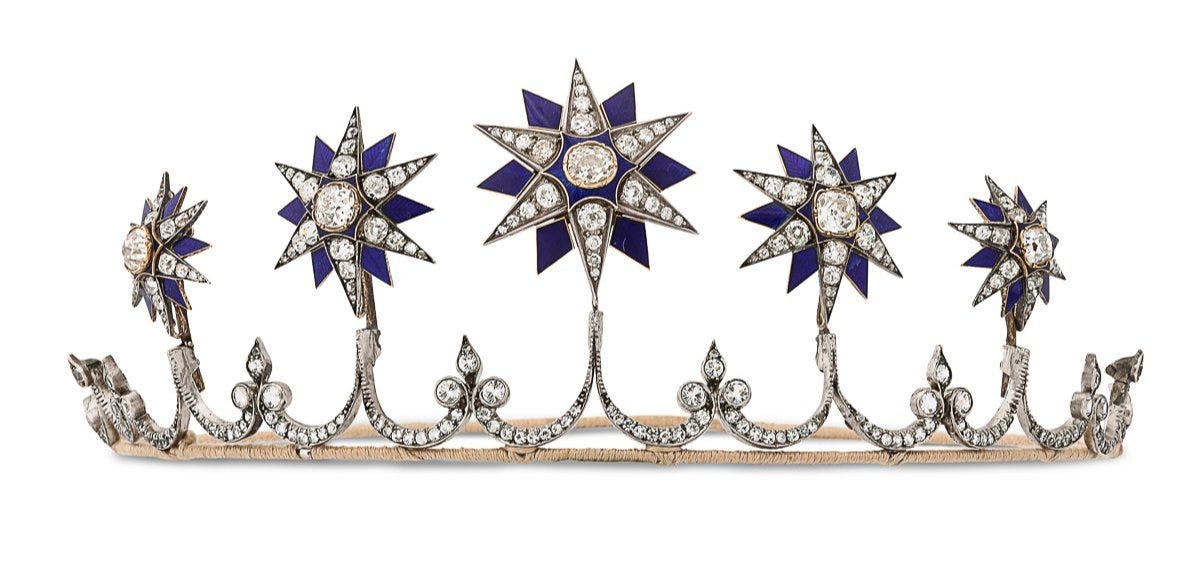
This lovely example, again from A La Vieille Russie, is a gold and diamond tiara set with five enamel and diamond stars.
Apparently, repurposing the components of crowns and tiaras is a thing. Each of the stars in this example from ALVR is made with brooch fittings. Who knew the upper classes were so thrifty?
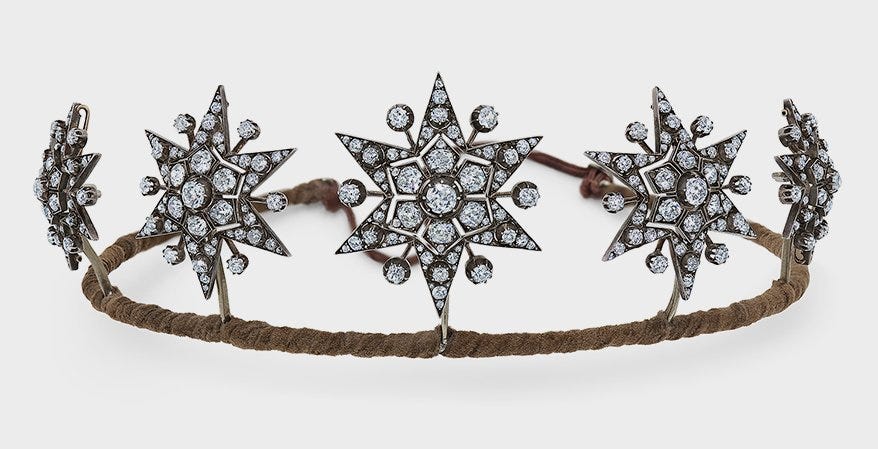

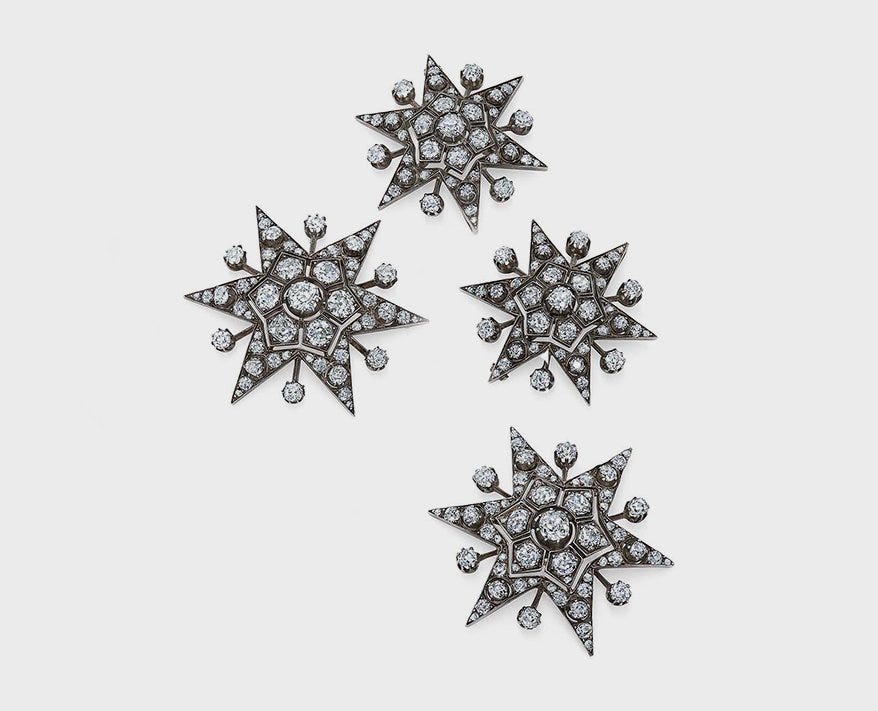
Steadfast motifs
The final concept I want to share is a phrase I saw repeated throughout my research—the archaeological style.
Archaeological style describes a classic motif or arrangement of components frequently seen in jewelry thousands of years old, such as in Greek and Egyptian pieces. Contemporary designers can benefit from knowing that our attraction to certain styles persists over millennia.
Here is an example from Wartski. I’m sure you will recognize a similarity between this piece made in 1870 and those depicted in Egyptian friezes. This type of necklace is flattering and easy to wear, and, for our modern needs, it will be visible in a FaceTime call or Zoom meeting.
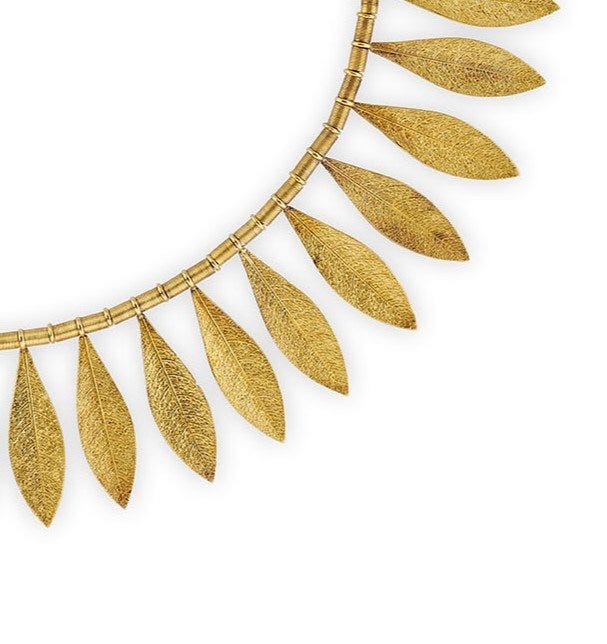
Do Your own research
In addition to the pieces from A La Vieille Russie and Wartski, these Winter Show dealers also have significant jewelry of interest to today’s designers - Didier Ltd, Kentshire, Les Enluminures, Macklowe Gallery, Ltd.
When you research them, notice which style appeals to you and ask why. Apply a vocabulary to your attraction. And make a note of which motifs and symbols are currently popular. This way, you increase your understanding of what designs you prefer and can add that knowledge to your design toolbox.
Being a creative entrepreneur is complicated. Before you decide how to proceed in the coming year, take the time to determine what will truly make you happy. Don't spend another year working hard to accomplish goals that leave you discontented.
The Pathfinder Process we use in Jewelry Club helps you identify all your reasons for choosing this creative career and to set sustainable, fulfilling goals for the coming year. Subscribe here for updates. The six-week program begins February 6.



